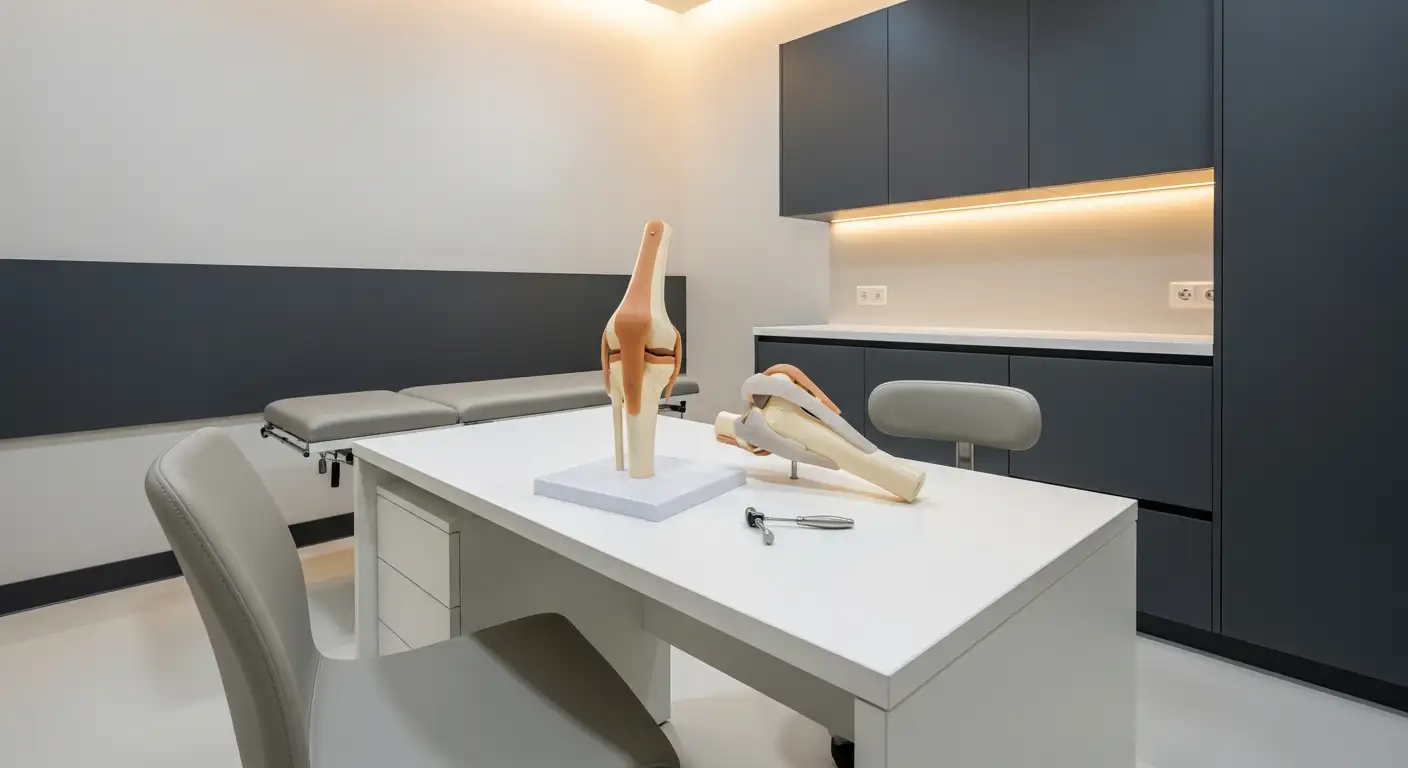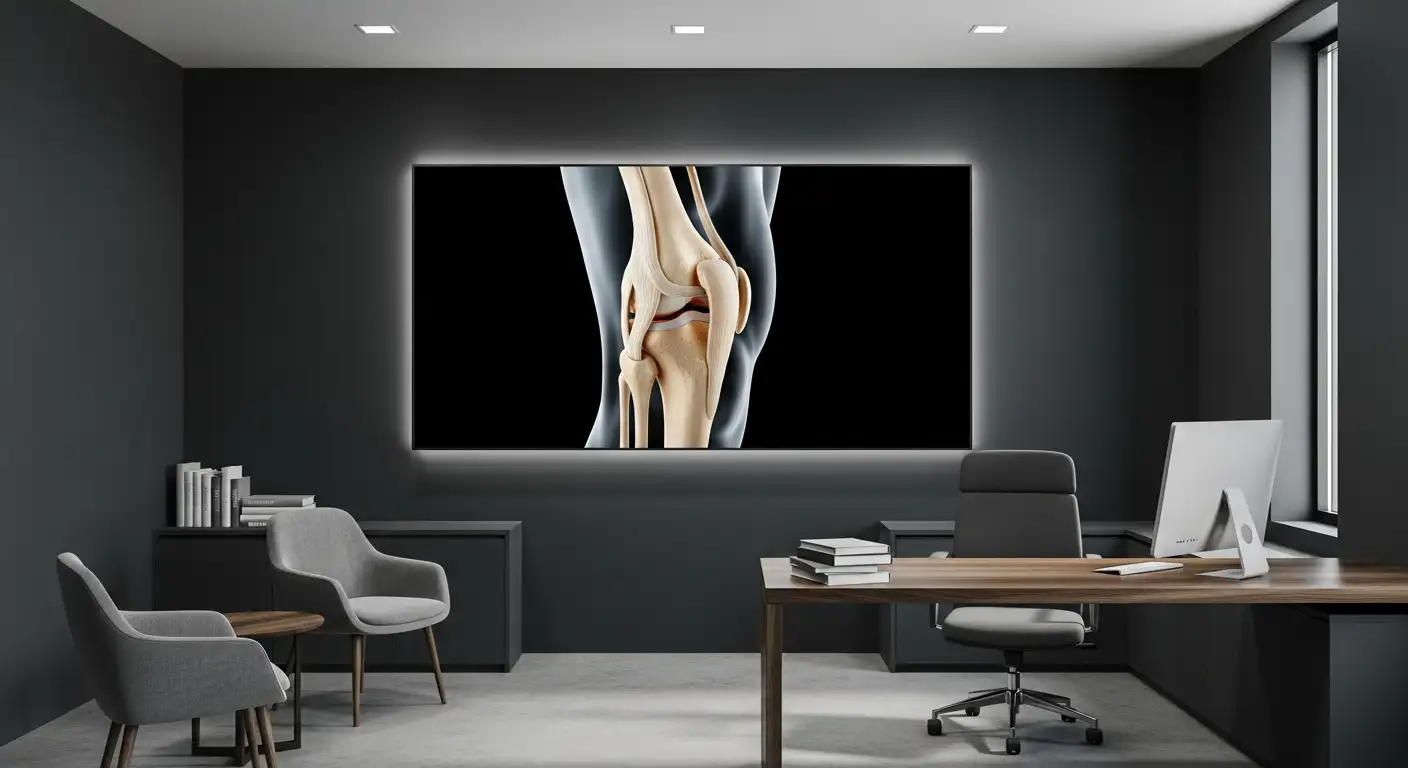Understanding Coolief Treatment
The advancements in medical technology have led to the development of innovative treatments for chronic pain, one of which is Coolief. But, what is Coolief treatment? And what is the science behind it?
What is Coolief Treatment?
Coolief treatment, also known as COOLIEF* cooled radiofrequency ablation, is a minimally invasive procedure that targets nerves transmitting pain signals. It is the first and only radiofrequency treatment that has been FDA-cleared for the relief of osteoarthritis knee pain.
Besides knee pain, Coolief treatment is also used to provide relief for chronic pain in other parts of the body, including the spine, neck, hip, and shoulder. As a result, it offers a promising treatment option for individuals suffering from chronic pain that is not responsive to traditional pain management methods [1].

The Science Behind Coolief
Coolief treatment works by using radiofrequency energy to target specific nerves responsible for sending pain signals from the knee to the brain. The procedure involves inserting a tiny probe into the knee. This probe then uses radiofrequency energy to target the nerves around the knee, thereby disrupting the transmission of pain signals [2].
By directly targeting these nerves, Coolief treatment can provide significant relief from chronic pain. This approach allows for a more targeted and effective treatment method, helping patients experience long-term pain relief without the need for invasive surgery or continuous medication.
Understanding the science behind Coolief treatment is crucial for potential patients. It provides insight into how the treatment works, allowing them to make informed decisions about their pain management options. As research and technology continue to advance, treatments like Coolief will likely become an increasingly common solution for managing chronic pain.
Coolief Treatment for Knee Pain
Understanding Coolief treatment, particularly its application for knee pain, is vital for those seeking long-lasting and minimally invasive solutions for managing their discomfort.
How Coolief Addresses Knee Pain
Coolief treatment is a medical procedure that uses radiofrequency energy to target specific nerves responsible for pain transmission. For knee pain, this involves inserting a tiny probe into the knee, which then uses this energy to focus on the nerves around the knee, responsible for sending pain signals to the brain [2].
The procedure is minimally invasive and does not involve opioids, reducing the risk profile compared to surgical alternatives. Furthermore, the recovery time is generally short, enabling patients to resume their normal activities faster.
Effectiveness of Coolief for Knee Pain
The effectiveness of Coolief for knee pain has been evaluated in a prospective, multicenter, randomized, crossover clinical trial. The trial compared the safety and effectiveness of cooled radiofrequency ablation, the technique used in Coolief, with corticosteroid injection in managing knee pain from osteoarthritis.
The results from these studies have shown that Coolief treatment can provide significant pain relief for patients with knee arthritis. Some patients reported reductions in pain levels by up to 60-70%.
Moreover, the effects of Coolief treatment can last for up to one year or more, providing patients with long-lasting pain relief without the need for daily medications or frequent doctor visits [2].
In summary, Coolief treatment presents an effective, minimally invasive alternative for managing knee pain, particularly for patients suffering from osteoarthritis. Its ability to significantly reduce pain levels and provide long-lasting relief makes it an appealing option for many individuals.
The Coolief Procedure
Understanding what is involved in the Coolief treatment procedure is crucial for anyone considering this option for pain relief. This treatment is minimally invasive and uses radiofrequency energy to target the source of the pain.
The Steps Involved in Coolief Treatment
The Coolief treatment procedure involves several steps. Initially, a tiny probe is inserted into the knee. This probe uses radiofrequency energy to target the nerves around the knee that are responsible for sending pain signals to the brain.
This energy specifically targets and treats the source of the pain to provide long-lasting relief from chronic conditions. This method of using cooled radiofrequency energy is a key element of the Coolief treatment. It is what sets Coolief apart from other types of radiofrequency ablation used for pain relief.
- The patient is positioned comfortably on an examination table.
- The area around the knee is sterilized to prevent infection.
- A local anesthetic is applied to numb the area.
- The doctor uses X-ray guidance to insert a tiny probe into the knee.
- Radiofrequency energy is passed through the probe to target the pain-causing nerves.
- The procedure is completed, and the probe is removed.
Recovery from Coolief Treatment
Recovery from Coolief treatment is typically straightforward. As a minimally invasive procedure, the recovery time is often shorter than that of more invasive pain relief treatments. The procedure does not require hospitalization, and patients can usually return home on the same day.
After receiving the Coolief treatment, patients may experience some discomfort around the treated area. This is normal and should subside within a few days. Over-the-counter pain relievers can be used to manage any discomfort during this time.
Most importantly, patients may experience reduced pain and improved quality of life after the treatment. The alleviation of pain allows patients to return to their daily activities and enjoy a higher quality of life [4].
Remember, it's always important to follow your healthcare provider's instructions regarding post-procedure care and recovery. Regular follow-ups with your healthcare provider will ensure the procedure's success and your ongoing comfort.
Benefits of Coolief Treatment
When it comes to managing chronic pain, it's important to explore all available treatment options. One such option that's gaining traction is Coolief treatment. This innovative procedure offers numerous benefits for patients, including long-term pain relief and a minimally invasive nature.
Long-Term Pain Relief
One of the primary benefits of Coolief treatment is its potential for long-term pain relief. According to a report from Harvard Health Publishing, the effects of Coolief treatment can last for up to one year or more. This gives patients long-lasting relief without the need for daily medications or frequent doctor visits.
Additionally, as reported by MyCoolief, Coolief Cooled Radiofrequency treatment provides longer-lasting pain relief compared to steroid injections. This could potentially allow patients to reduce their dependence on pain medications for relief.
After receiving a Coolief treatment, patients may experience reduced pain and improved quality of life.
Minimally Invasive Nature
Another significant advantage of Coolief treatment is its minimally invasive nature. Unlike surgery, Coolief treatment has a lower risk profile and typically has a short recovery time. This allows patients to resume normal activities faster [2].
Moreover, COOLIEF* cooled radiofrequency ablation can bring minimally invasive relief to those suffering from chronic pain, without the use of opioids. This offers an alternative to surgery and avoids the side effects of opioids [1].
These benefits make Coolief treatment an attractive option for many patients suffering from chronic pain. By offering long-lasting relief and a minimally invasive procedure, Coolief treatment represents an important advancement in the field of pain management.
Coolief and Other Pain Areas
While Coolief treatment is widely recognized for its effectiveness in addressing knee pain, it's also utilized for managing pain in other areas. Two of these areas include the back and the neck/shoulder region.
Coolief for Back Pain
Back pain is often debilitating and can significantly impact a person's quality of life. Fortunately, COOLIEF Cooled Radiofrequency treatment offers hope for those struggling with this condition. This treatment is effective in treating various types of back pain, including discogenic back pain, chronic lumbar (lower) back pain, and chronic thoracic facet pain. This information is corroborated by MyCoolief, a reputable source in the field of pain management.
One of the key benefits of Coolief treatment for back pain is its longer-lasting pain relief compared to traditional treatments like steroid injections. This potentially allows patients to reduce their dependence on pain medications for relief. Additionally, COOLIEF* cooled radiofrequency ablation offers a minimally invasive alternative to surgery, helping patients avoid the side effects of opioids.
Coolief for Neck and Shoulder Pain
Neck and shoulder pain, whether due to strain, injury, or chronic conditions, can be just as debilitating as back pain. COOLIEF* cooled radiofrequency ablation also provides relief for chronic pain in these areas. As stated by MyCoolief, Coolief treatment for neck and shoulder pain can bring minimally invasive relief to those suffering from chronic pain, avoiding the side effects of opioids.
In summary, Coolief treatment extends beyond knee pain, offering effective pain management solutions for back, neck, and shoulder pain. By targeting the nerves that transmit pain signals, Coolief can provide much-needed relief for patients dealing with chronic pain in these areas. It's always advisable to consult with a healthcare provider or a pain management specialist to determine if Coolief treatment is the right option for your specific pain condition.
Comparing Coolief with Other Treatments
When looking for pain relief options, it's essential to understand the differences between various treatments. In this section, we'll compare Coolief treatment with two other common approaches to managing knee pain: steroid injections and conventional radiofrequency treatment.
Coolief vs Steroid Injections
Steroid injections are a traditional method of managing knee pain from osteoarthritis. However, in a prospective, multicenter, randomized, crossover clinical trial, Coolief treatment was compared with corticosteroid injection in managing knee pain from osteoarthritis. The study found that Coolief, a minimally invasive treatment targeting nerves that transmit pain signals, was the first and only radiofrequency treatment FDA-cleared for the relief of osteoarthritis knee pain.
Coolief treatment uses radiofrequency energy to target the nerves responsible for sending pain signals from the knee to the brain. Results from studies have shown that Coolief treatment can provide significant pain relief for patients with knee arthritis, with some patients reporting reductions in pain levels by up to 60-70%.
Comparatively, Coolief treatment has a lower risk profile compared to steroid injections. It is minimally invasive, does not involve opioids, and generally has a short recovery time, allowing patients to resume normal activities faster.
Coolief vs Conventional Radiofrequency Treatment
When comparing Coolief treatment to conventional radiofrequency treatment, it's important to consider the specific benefits of Coolief. As the first and only radiofrequency treatment FDA-cleared for the relief of osteoarthritis knee pain, Coolief offers a unique approach to pain management.
While both treatments involve the use of radiofrequency energy, Coolief targets and cools the nerves responsible for transmitting pain signals from the knee to the brain, offering long-lasting pain relief. On the other hand, conventional radiofrequency treatment involves the use of heat to disrupt nerve function, which may not provide as long-lasting relief.
In summary, when considering Coolief treatment, it's crucial to understand how it compares to other treatments. By understanding these differences, patients can make informed decisions about what is the best treatment method for them.
References
[1]: https://www.mycoolief.com/about/
[2]: https://www.health.harvard.edu/blog/harvard-health-ad-watch-a-new-treatment-for-knee-arthritis-2019101518015
[3]: https://www.ncbi.nlm.nih.gov/pmc/articles/PMC5768219/
[4]: https://www.mycoolief.com/articles/how-does-coolief-cooled-rf-work/





